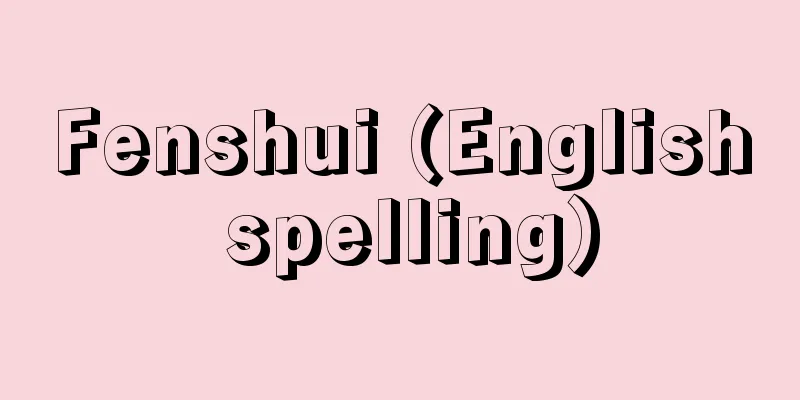Genzui Udagawa

|
A Dutch scholar in the late Edo period. He was the son of Udagawa Doki (1710-1760), a Confucian physician from Tsuyama Domain in Mimasaka Province (Okayama Prefecture). His given name was Shin, his pen name was Meikei, and he was also known as Kaien and Tokai. From an early age, he was gentle and taciturn, and read the Book of Filial Piety carefully. At the age of 25, he was impressed by Western theories and began to study them, becoming a pupil of Sugita Genpaku, Maeno Ryotaku, and Katsuragawa Hoshu. Hoshu in particular admired his talent and encouraged him to translate a book on internal medicine by J. de Gorter (1689-1762). After 10 years of hard work, Genzui published the 18-volume Seisetsu Naika Senyo in 1793 (Kansei 5). In this book, he classified illnesses into 55 types, and paid careful attention to the correspondence between Latin and Chinese medical terminology. Before publication, Otsuki Gentaku pointed out that it was too simple for a Western-style internal medicine book, but Genzui went ahead and published it as it would pave the way for the future. This book created the prototype for full-fledged internal medicine, and promoted its subsequent development. In his later years, he began drafting revisions, but passed away on December 18, 18th year of Kansei (Kansei 9) without completing the manuscript. The annotations were completed by his adopted son, Shinsai, and his disciple Fujii Hōtei (1778-1845) published an expanded and revised 18-volume edition in 1822 (Bunsei 5), completing the work through succession from master to disciple. Genzui's other works include "Western Medical Words," "Thoughts on the Specialties of the Far West," "A Brief Summary of the Far West Herbs," and "Thoughts on Diseases in the East and West." He was buried at Seiganji Temple in Asakusa, Tokyo, but was later reburied at Tama Cemetery and then at Taianji Temple in Nishidera-cho, Tsuyama City. [Tetsuo Suenaka] "Bisoka Doctors' Biography (1959, Okayama Prefecture Medical Association)" ▽ "Medical History Stories - From Sugita Genpaku to Fukuzawa Yukichi" by Fujino Tsunesaburo (1984, Saikon Publishing) [References] | | | | |Source: Shogakukan Encyclopedia Nipponica About Encyclopedia Nipponica Information | Legend |
|
江戸後期の蘭学者(らんがくしゃ)。美作(みまさか)国(岡山県)津山藩の儒医宇田川道紀(どうき)(1710―1760)の嗣子(しし)。名は晋(しん)、字(あざな)は明卿(めいけい)、槐園(かいえん)・東海と号す。幼時より性格は温柔寡言、孝経などを精読、25歳のとき、西学説に感服して学び始め、杉田玄白(げんぱく)、前野良沢(りょうたく)、桂川甫周(かつらがわほしゅう)の門に入った。とりわけ甫周はその才を愛し、ゴルテルJ. de Gorter(1689―1762)の内科書の翻訳を勧めた。玄随は刻苦10年、1793年(寛政5)『西説内科選要』18巻を刊行、この書で病気を分類して55種をあげ、術語はラテン語と漢方術語との対応に留意している。刊行前、大槻玄沢(おおつきげんたく)は蘭方内科書として簡略すぎることを指摘したが、玄随は道を開くものとしてあえて刊行した。本書により本格的な内科学の原型が生まれ、その後の発展を促進した。晩年補訂の稿をおこしたが脱稿せぬまま、寛政(かんせい)9年12月18日に没した。補注は養子榛斎(しんさい)が完成し、門人藤井方亭(ほうてい)(1778―1845)が1822年(文政5)に増補重訂版18巻を刊行し、師弟相承して大成した。玄随の著作には、ほかに『西洋医言』『遠西名物考』『遠西草本略』『東西病考』などがある。東京・浅草の誓願寺に葬られたが、のち多磨霊園、さらに津山市西寺町泰安寺に改葬された。 [末中哲夫] 『『備作医人伝』(1959・岡山県医師会)』▽『藤野恒三郎著『医学史話――杉田玄白から福沢諭吉』(1984・菜根出版)』 [参照項目] | | | | |出典 小学館 日本大百科全書(ニッポニカ)日本大百科全書(ニッポニカ)について 情報 | 凡例 |
<<: Utagawa Toyokuni - Utagawa Toyokuni
Recommend
Nama
...They once lived in large numbers in South Afri...
Musashi Province
A province established under the Ritsuryo system,...
Parler, P. (English spelling) ParlerP
…The first of the family, Heinrich von Gmünd (dat...
Glass Transition - Glass Transition
When metals, inorganic substances, organic substa...
Ir gene
...A gene that controls the immune response to a ...
Micron - Micron (English spelling)
A unit of length. It is one thousandth of a milli...
Ichikishiki Pottery
…It was discovered in 1921, and in 1961, full-sca...
Montagu, J., 4th Earl of Sandwich
…[Shizuo Tsuji]. … *Some of the terminology that ...
Inson - Inson
Year of death: Kenkyu 9.10.29 (1198.11.29) Year of...
Nyctibiidae
…any bird of the family Nyctibiidae, order Nyctib...
lesser panda
...A general term for the two species of mammals ...
fableau
...The work makes extensive use of dialogue, sugg...
Cinclidae
…A general term for birds of the Cinclidae family...
Pedrell, Felipe
Born: February 19, 1841, Tortosa [Died] August 19,...
Popular Entertainment - Taishuuengei
Generally, it refers to popular arts that are perf...









